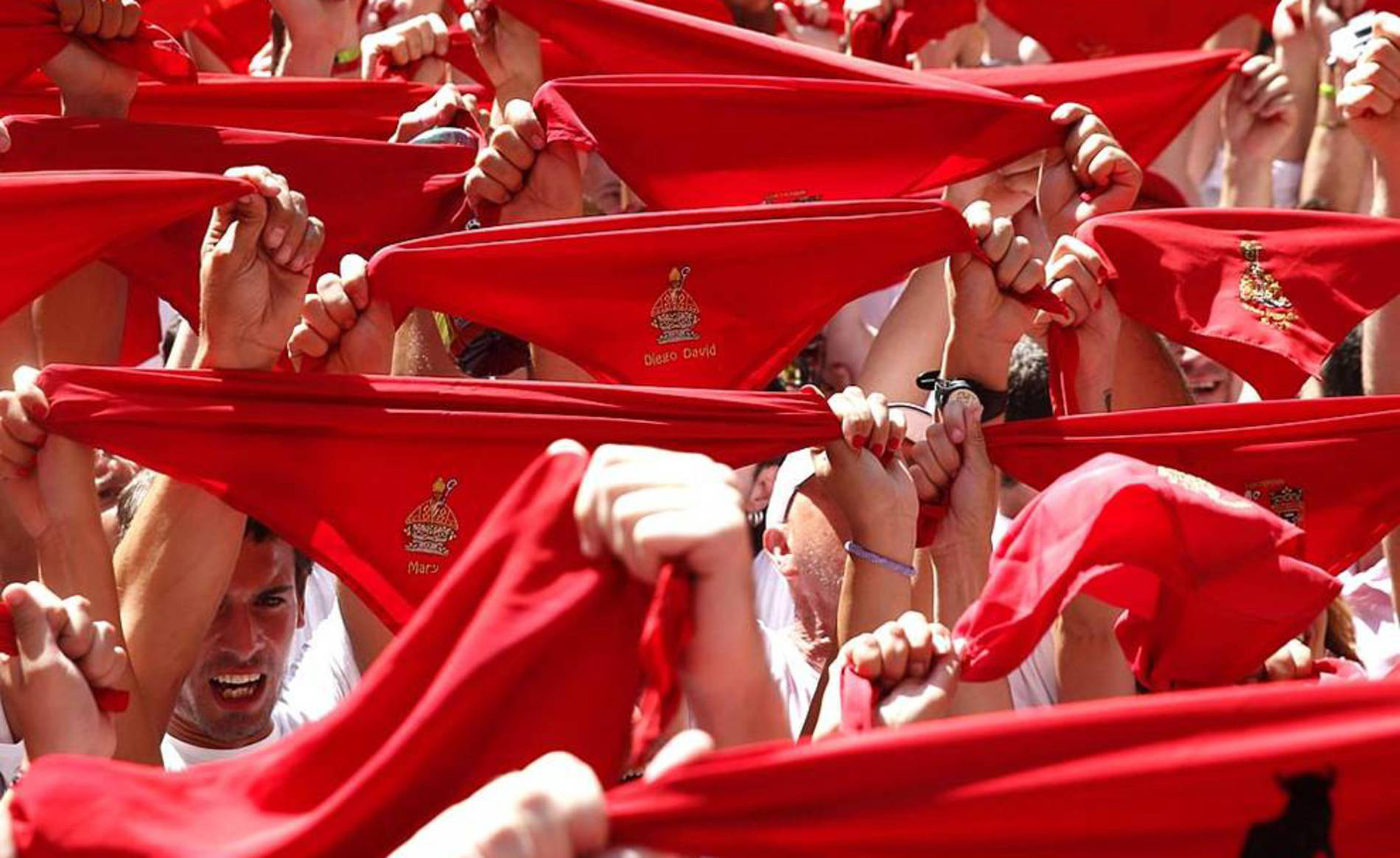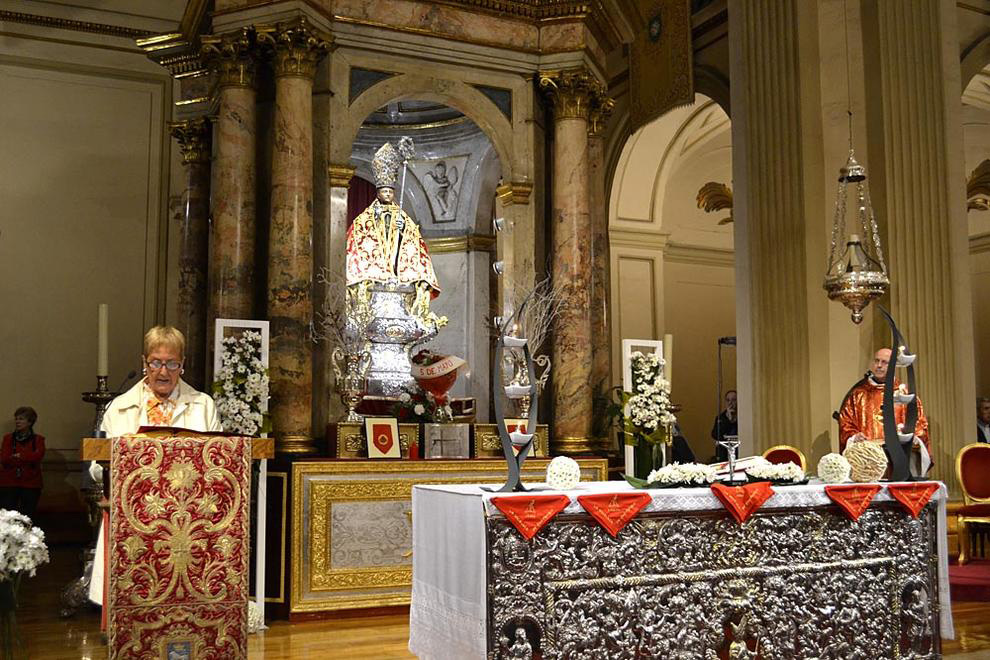Basque ethnography at a glance

Festive explosion in the city hall square before the rocket launch. J.M.S. Azcona-EFE.
Life does not run in a straight line. Customs and traditional ways of life do not remain fixed and immutable. Well aware of this, José Miguel de Barandiaran, our guide and teacher, showed us it is not enough to record them as observed in the past. Their evolution and the alterations that led to new behavioural patterns should also be accounted for.
Such is the case of the hugely popular festival held in honour of Saint Fermin in Pamplona (Navarre) and known as the sanfermines. To begin with, the feast has not always kicked off on 7 July, but sometime around St Peter’s Day in June. A second round of celebrations used to take place on and around 25 September, the anniversary of Saint Fermin’s beheading, this time as a minor event. Still, this had not always been the case, for the September festivities had enjoyed greater splendour in olden days, bullfighting included. Just like fun and enjoyment, tragedy was already in those days an inseparable and inherent part of the festival, as portrayed by the Belgian poet Émile Verhaeren and the painter Darío de Regoyos in the work España negra (1888): drunkards singing, whistles and flutes from the Roncal region playing pastoral tunes, and street bands stirring the crowd in the early hours of the morning (“… cantan los borrachos, y entre pitos y flautas del Roncal tocando aires pastoriles de montaña y las murgas que ya a las cinco de la mañana empiezan a alborotar la población…”) in contrast to the raw picture of a group of gypsies in Soto de Lezkairu handling the dead bodies of horses, victims of the fiesta, in pursuit for fat to make precious soap.
In fact, the supposed unchangeable character of the feast of St Fermin is merely apparent. Ollarra, in his Gallos de San Cernin editorial (2 June 1978), argued it was the arrival of development, or more precisely consumerism, that changed the way of celebrating the occasion. His words evoke nostalgic memories of the joys of those hot and sunny days prior to the festival: the fair stalls had been newly set up and the bulls moved into the Gas pens; pockets full of money and exams completed, they eagerly looked forward to welcoming the foreigners (“Antes, estos días de barracas recién instaladas, de desencajonamientos en el Gas y a la espera de los forasteros, enteros los ahorros en el bolsillo y acabados los exámenes, con sol y buen tiempo, eran la alegría de la esperanza…”). By the time he wrote those lines though, every Saturday was feast day (“Ahora cualquier sábado es sanfermines…”). Not to mention the acid criticism displayed on the banners of the groups involved in the party, a combination of sarcasm and humour that gave way to an urge to raise political awareness, losing touch with a tradition so deeply rooted in a people: the pleasure of a time that reveals a somewhat subversive attitude but does not risk its festive character.
Víctor Manuel Arbeloa, in his book Por Navarra, de Leyre a Mañeru (1985), describes the festival at Pamplona as an ethnic celebration, ludic, lay, religious and metaphysical at the same time, a demonstration of identity, in his opinion (“una celebración étnica, entre lúdica, laica, religiosa y metafísica…, una demostración de identidad.”).
It is within this perspective that the practice established in recent decades and acknowledged below should be understood. We refer to the so-called St Fermin’s stairs or escalera de San Fermín. Since Ignacio Baleztena, the well-known Premín de Iruña, wrote the worldwide famous verses “Uno de enero, dos de febrero, tres de marzo, cuatro de abril…” (First of January, second of February, third of March…), sung sometimes with intonation patterns of unclear origin, members of the different associations and groups of friends celebrate each step (month) of the way on the day it falls with big dinners and a spree that leads to even higher exhilaration as the year advances and the day of the rocket launch gets a little closer. At the end of the festivities, and after a pitiful ¡Pobre de mí! (Poor me!), cries of ¡Ya falta menos! (It’s less to go!) optimistically announce the countdown to next year’s glorious fiesta has already begun. During the grey days that follow, and until the year is over, on descending the steps climbed with such enthusiasm, the people of Pamplona cannot wait to start the ascent again on 1 January.

Mass of the stairs at the chapel dedicated to the saint. Clara Sáinz.
Since 2009 the countdown to the festival is also celebrated in the religious sphere, a ritual that infuses spirit into our secular feast. The initiative was introduced by Santos Villanueva, parish priest of St Lawrence’s and custodian of the saint’s reliquary. A fairly recent and pious tradition called the mass of the stairs or misa de la escalera therefore emerged. During the ceremony at the saint’s chapel, genuine citizens of Pamplona offer him a bunch of red roses fastened with a ribbon where it reads the step climbed. A red scarf is placed on the altar table each time a step is mounted, so scarves multiply as we escalate up the stairway and fewer days are left till the 7 July.
Some find the previous dates to the feast are the best of dates, especially the run-up to the start, when the joy that fills the air is so intense the ephemeral hours pass at a dizzying pace. As the adage goes, the best part of a Sunday is Saturday afternoon, and the best moments of a great day happen on the eve… That is why the stairs tradition originated: to nurture the hopes and satisfy the restless spirits of those who expect the best of the approaching festival.
Francisco Javier Zubiaur – Etniker Navarre – Etniker Euskalerria Groups
Translated by Jaione Bilbao – Language Department – Labayru Fundazioa

